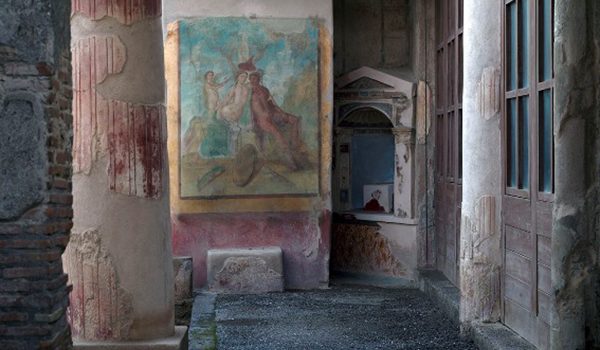POMPEIAN INTERIORS and SPATIAL ARCHIVES – The soul of Pompeii revealed through the photographic art project of Luigi Spina
A photographic project to explore the soul of Pompeii through the eyes of Luigi Spina, “Pompeian Interiors and Spatial Archives” is the name of the two-pronged artistic research which will be conducted by the photographer within the excavations in Pompeii in two phases. One will be through black and white photography, with sequences of streets and perspective views of Pompeian houses, while the other will use colour in the depiction of the interiors of the buildings of Pompeii.
The photographs will subsequently constitute a new visual heritage for the Park and site of Pompeii, and will be able to form the focus of a photographic exhibition to present the deepest and most intimate images of the ancient city, which will be sought and revealed through this project.
The Park, which has always been attentive to the various forms of art, and photography in particular, is promoting artistic research, in this case through one of the most celebrated Italian art photographers, who has already on several occasions studied the beauty of the city of Pompeii on several occasions.
The objective of Pompeian Interiors is to restore a human quality to the interiors of the Pompeian domus, whilst respecting their existence as contemporary spaces, devoid of their former inhabitants - the families. The photographer will trust to the changing light and variations of the weather, and the rooms of the domus will be captured in their everyday natural light, without artificial trickery. The objective is to capture their intimate vitality, and to restore the original dimension of an existential space, planned and constructed for the society of the time, to the excavations - which are not simply an archaeological site.
The Regiones will be investigated so as to restore to the observer an appreciation of the immensity and diversity of the sights of Pompeii. A new urban vision will emerge, composed of sequences of interiors which will be punctuated by views of the street network, crossroads and the Forum. From this point of view Spina’s research will extend in all directions, with the aim of offering a new image of the city.
Pompeian Interiors will be complemented by the Spatial Archives, which will study and penetrate the domus with greater attention, revealing their constructive and decorative fabric. From the Regiones to the Insulae and the dwellings, it will serve as an aid for material knowledge, aimed at delving into the ancient space and revealing its surfaces in their contemporary existence.
“Pompeii is the city of change. It is precisely this factor of time, the passage of the years, which yields a diverse image of the city,” - emphasises Massimo Osanna, outgoing Director of the Archaeological Park of Pompeii, and organiser of the project, “Since the mid-18th century, draftsmen, painters, philosophers, poets, writers, travellers and later photographers have been seduced by the charm of the buried city. They understood the nature of the historic and human catastrophe. The photographic image, while the contemporary medium of our times, is physiologically linked to the city of the volcano. The two-pronged photographic project of Luigi Spina is an authorial research with clear scientific implications, and an epic visual study, the like of which has never before been attempted. The term ‘encyclopaedic’ is the word best able to give a sense of the size of the ancient city, and in this case to the work of Spina. Pompeii is a temporal threshold which offers us the possibility of understanding every aspect of Roman life. It represents authentic encyclopaedic knowledge.”
In its cataloguing and sensitive restitution of Pompeian architectural materials, Spatial Archives will also collaborate with the first project of the Archaeological Park of Pompeii dedicated to contemporary art - Pompeii Commitment: Archaeological Matters.
The two research projects enjoy the technical support of a well-known and prestigious brand. Hasselblad, the famous manufacturer of professional cameras, has made one of its flagship products available to Luigi Spina - the Hasselblad H6D 100 C with its lenses is the essential accessory for tilt and shift control.


